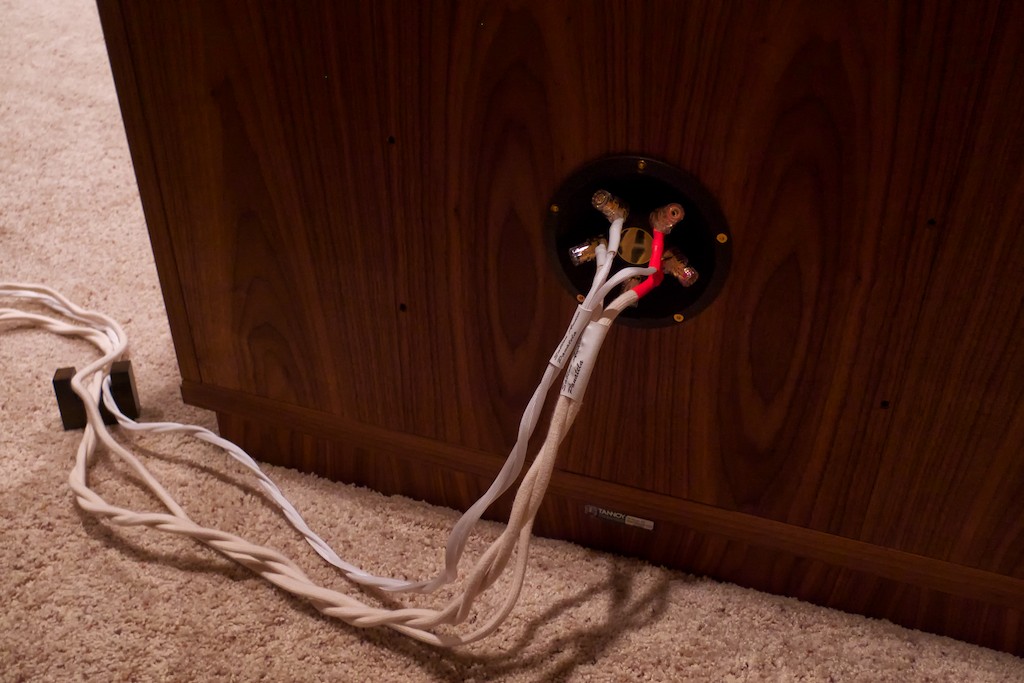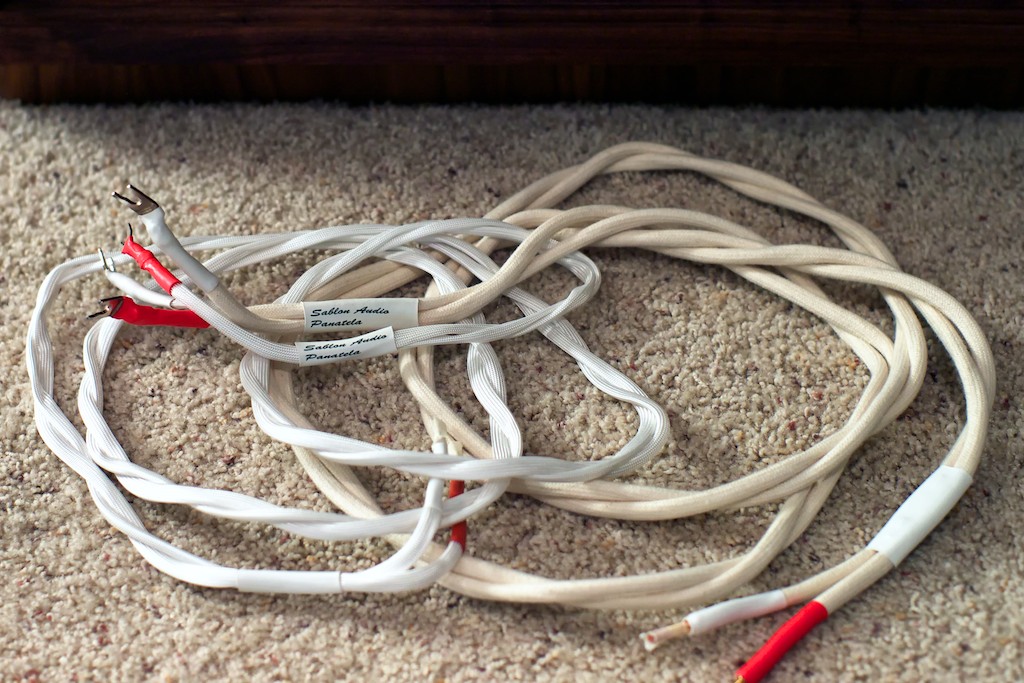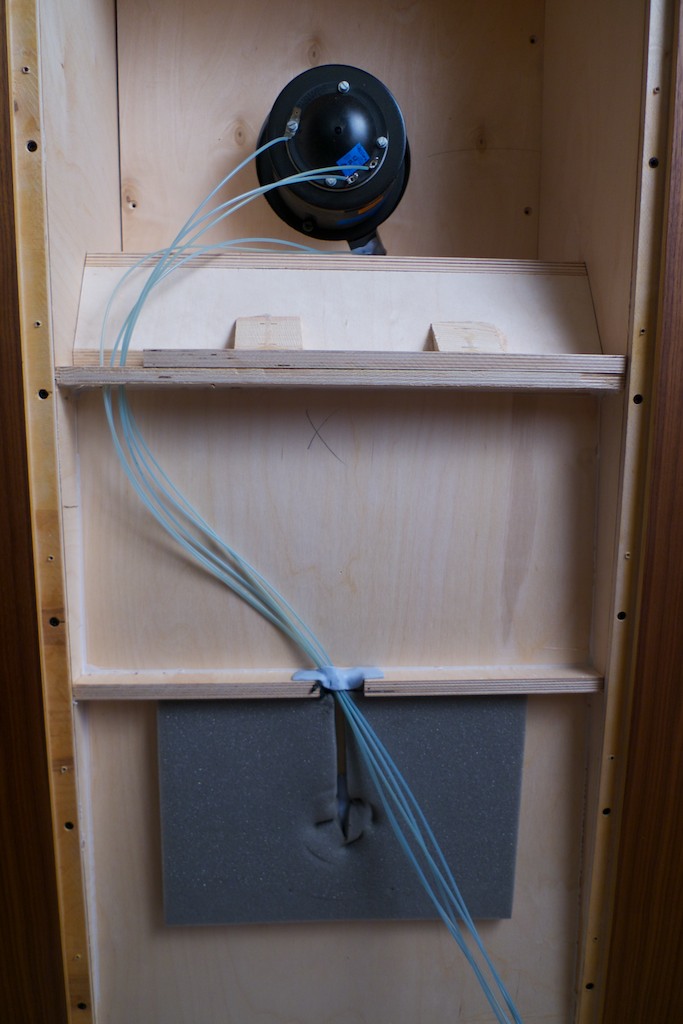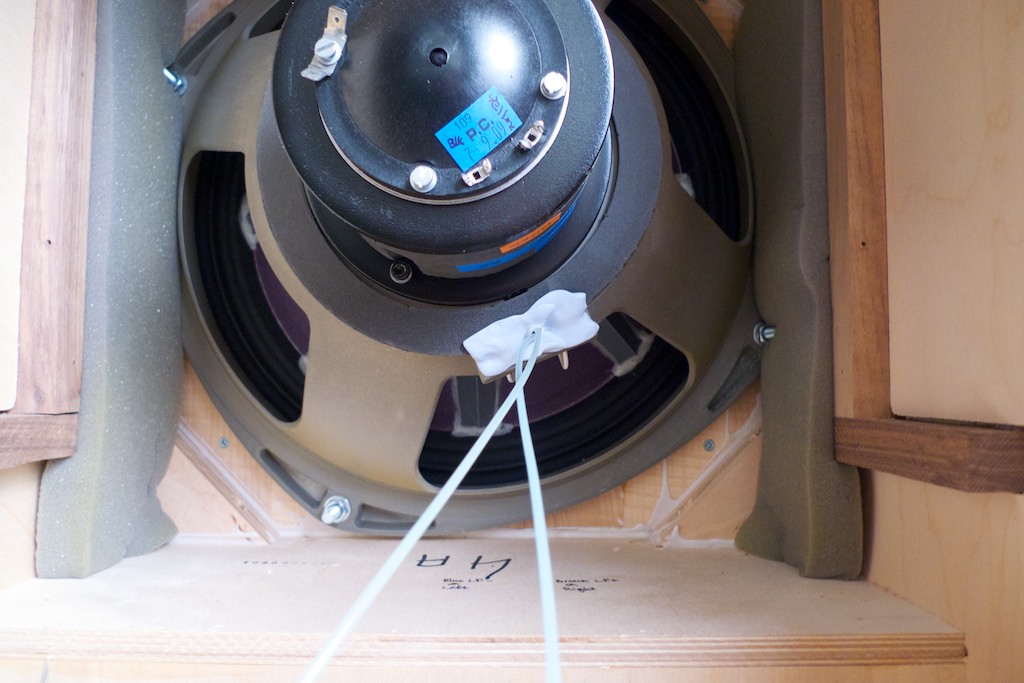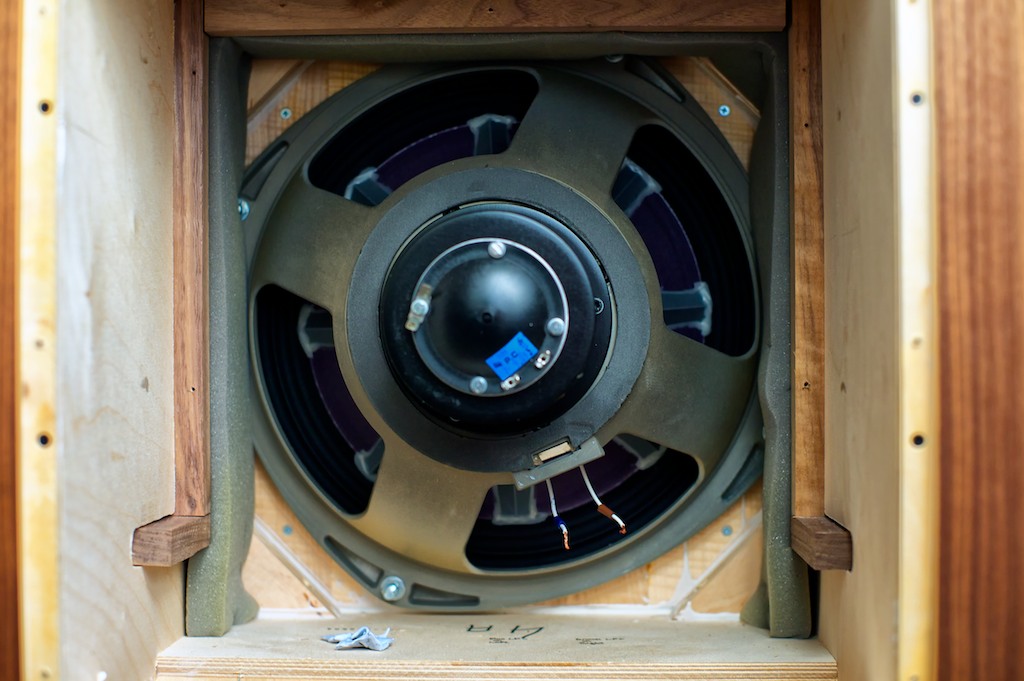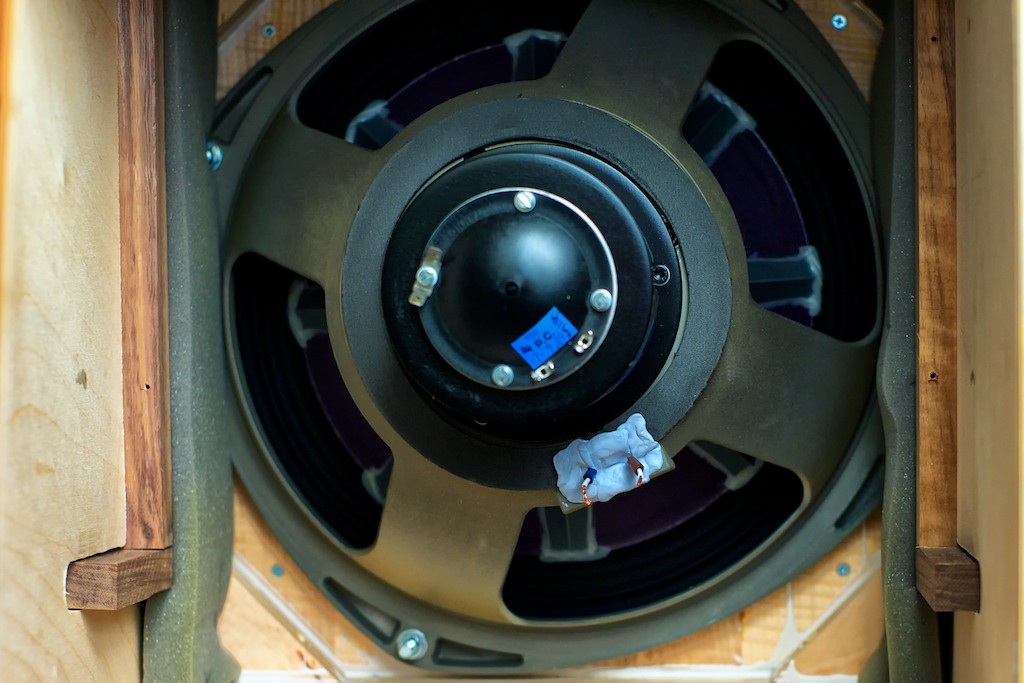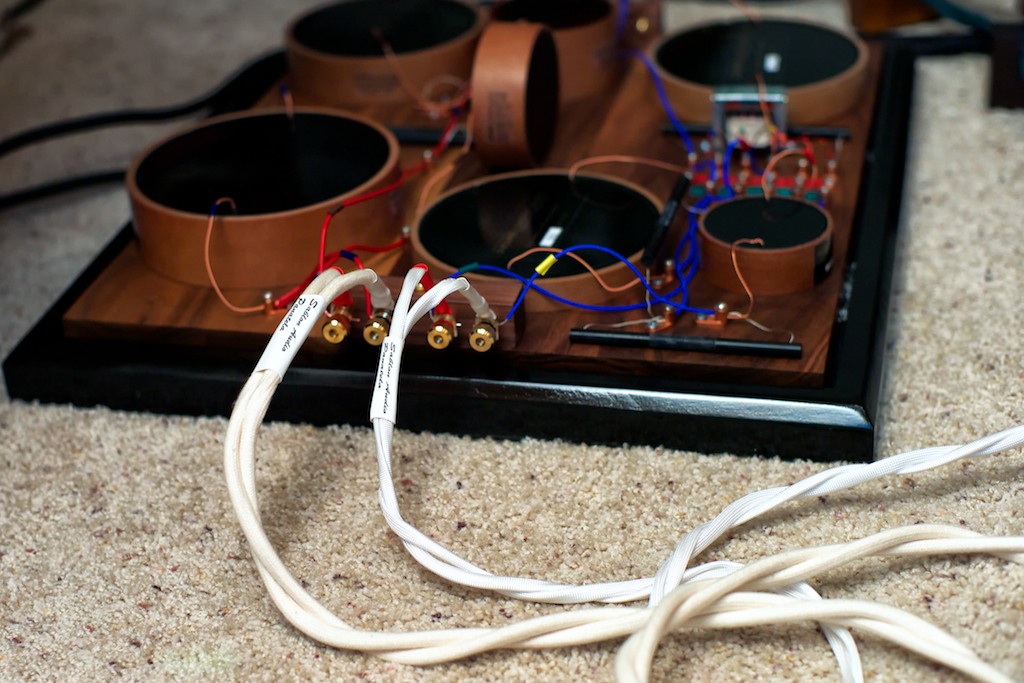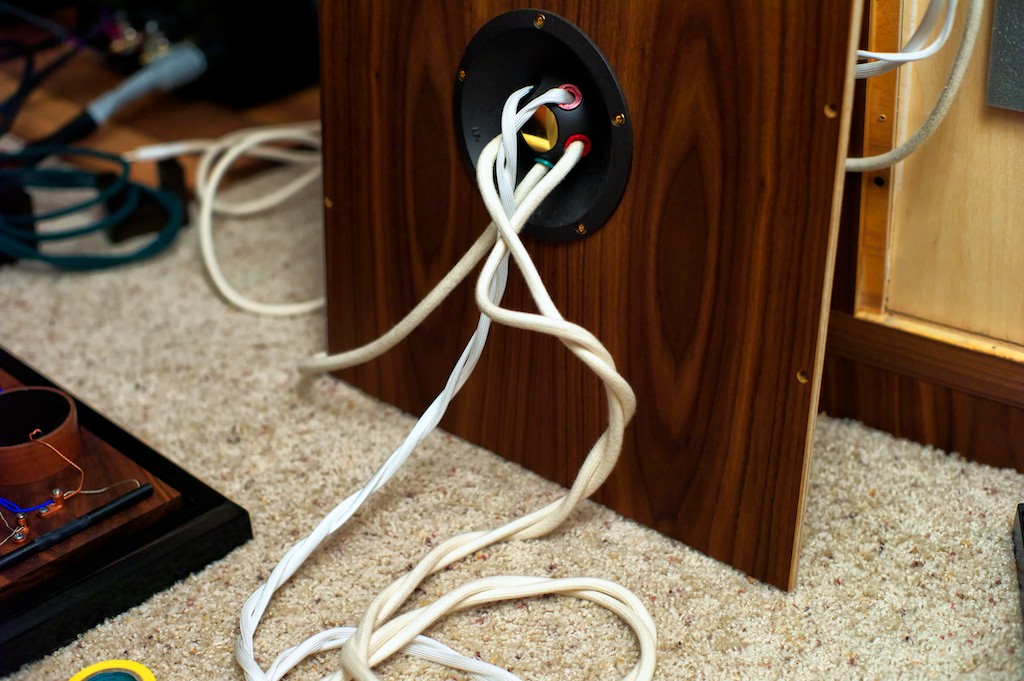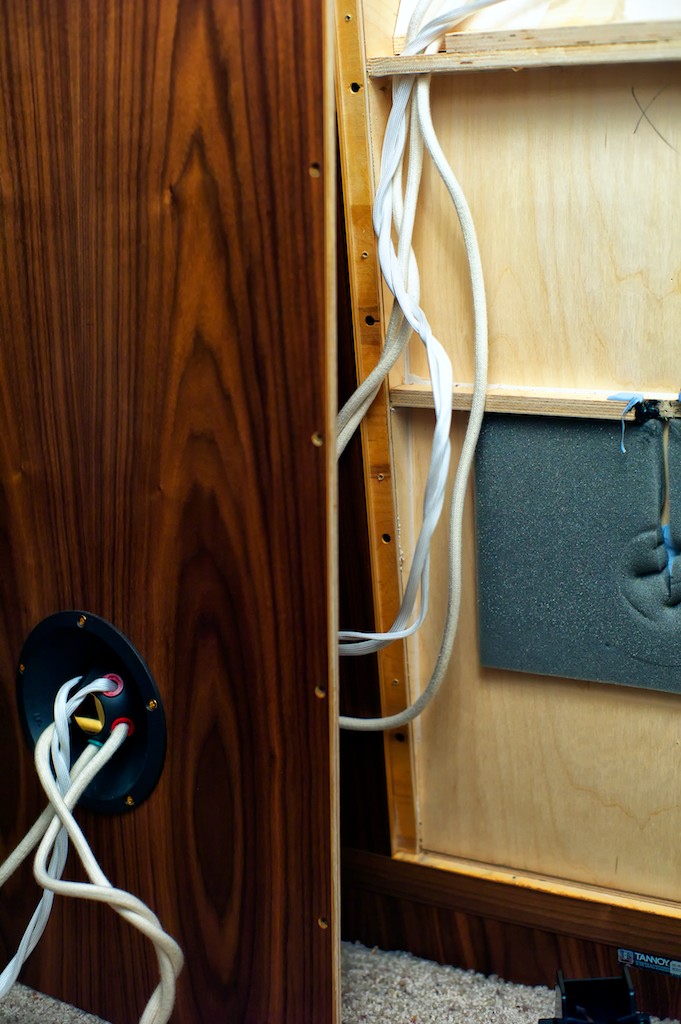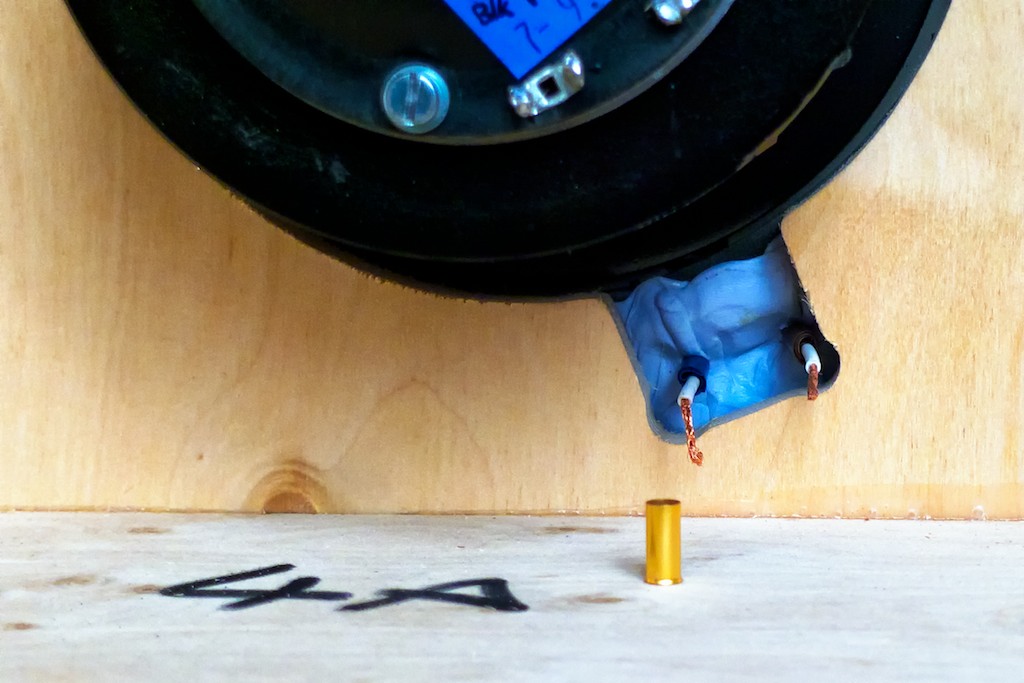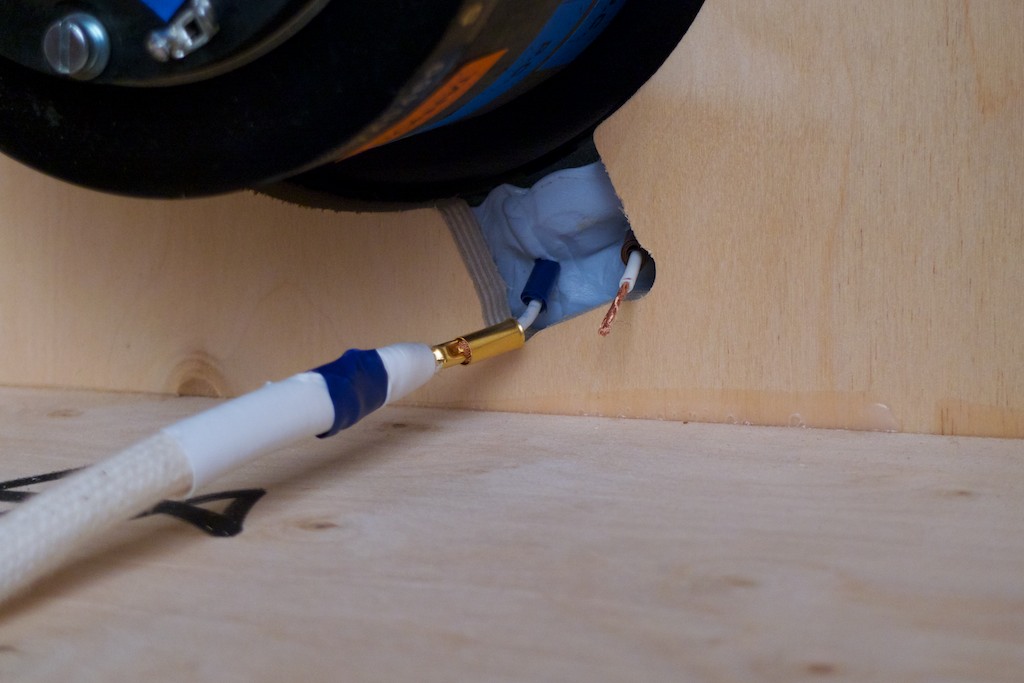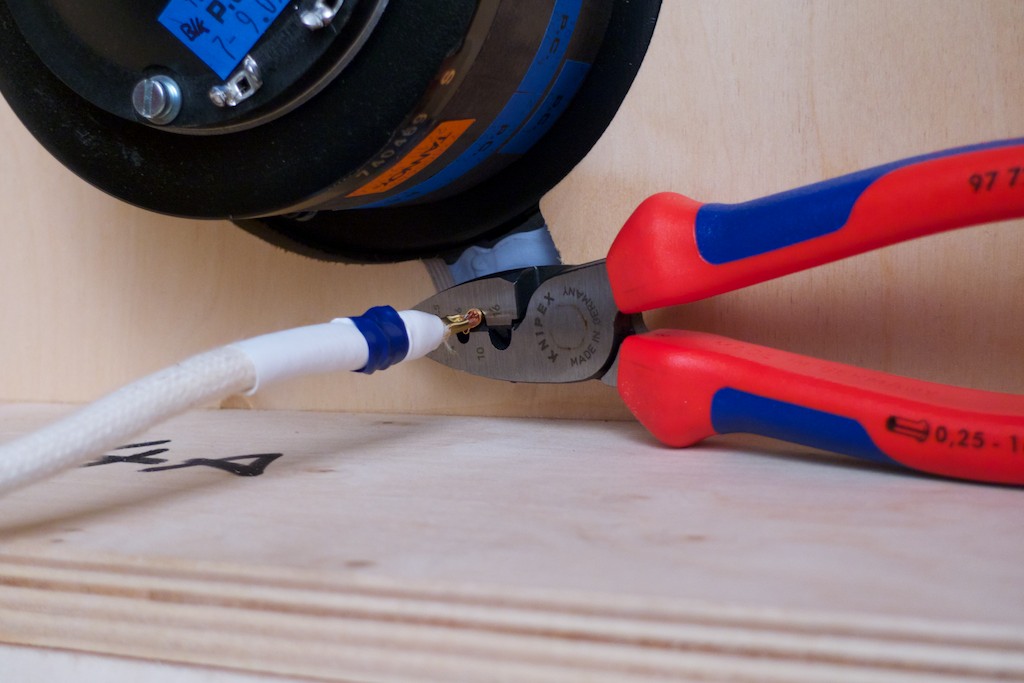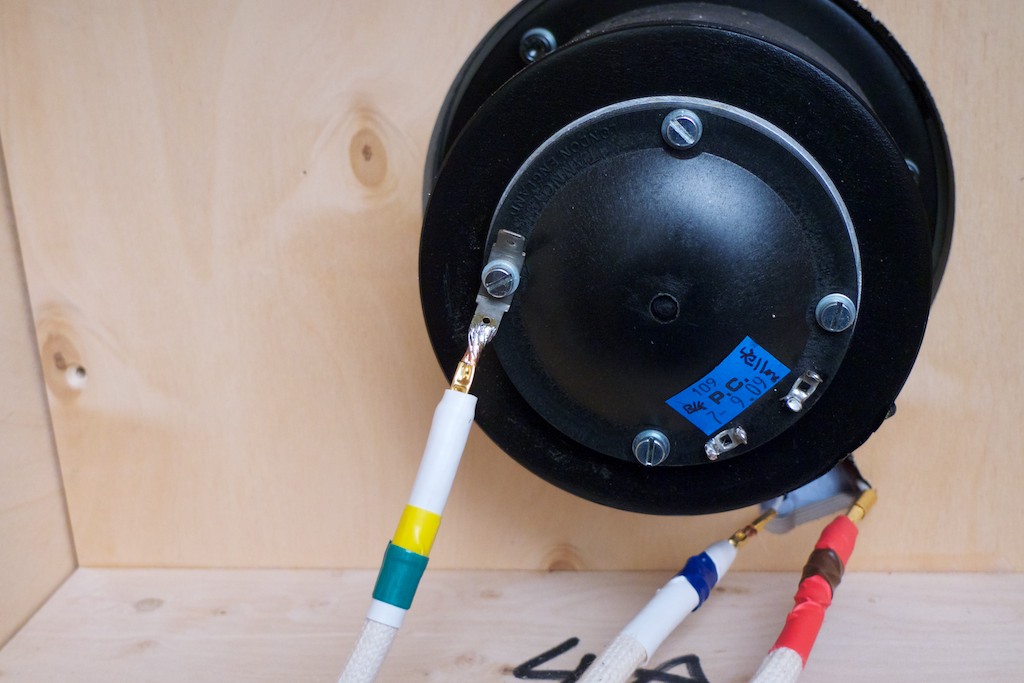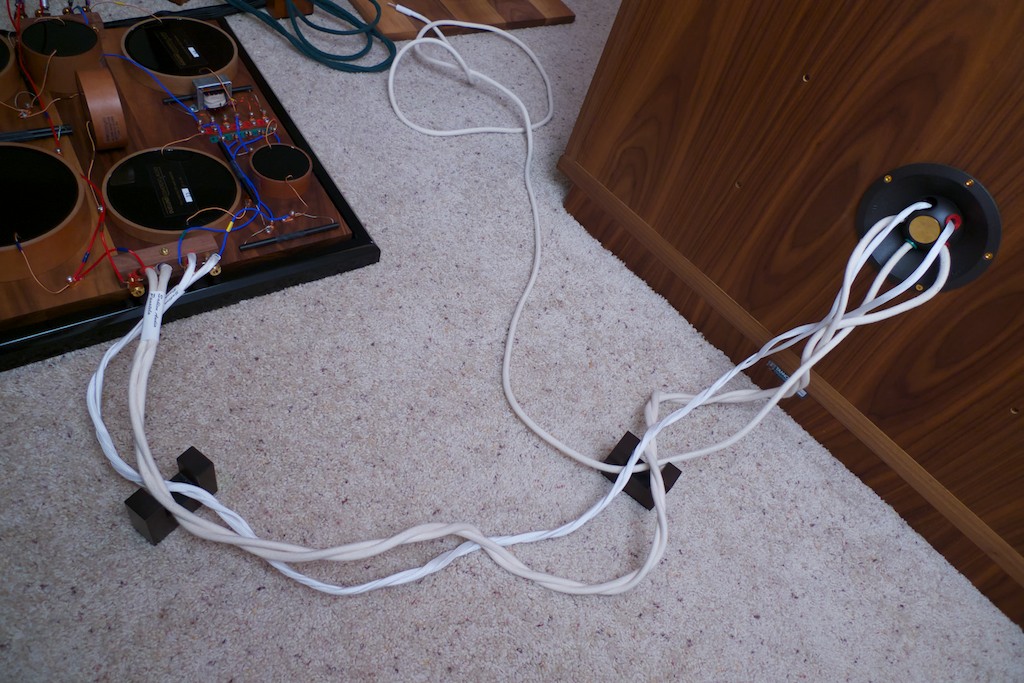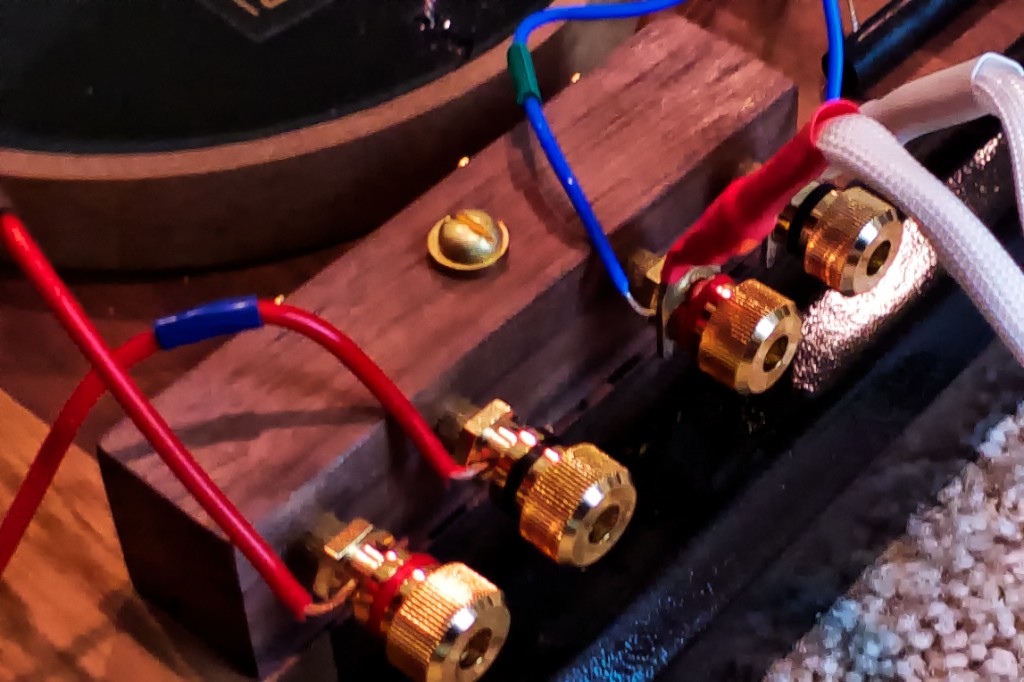I was excited to the see the package arrive from Mark Coles containing the custom internal Westminster Royal SE Sablon Audio Panatela wiring harness that Mark made for the Duelund-WRSE Project. These are the exact same custom Panatela Special Edition Component Speaker Cables that Mark optimized for the WRSEs with Paul Mills' input that I reviewed in the September/October 2012 Issue 63 of Positive Feedback Online.
I was pretty much blown away by the Panatela Special Edition component speaker cables, saying "I think you will be astounded with the final results just as I was. The Panatela Special Edition Component set of speaker cables has completely reset what I thought was possible from a set of speaker cables. Very enthusiastically recommended!"
Mark's suggestion of using the Panatela SEs as the internal wiring harness for the Westminster Royal SE loudspeakers and donating a set for use in the Duelund-WRSE Project completely blew me away! Thank you Mark! I recommend you go back and re-read that article to get the fully story on the Panatela SEs so you can better appreciate the full implications of using the Panatela SEs as an internal wiring harness for the Westminster Royal SE loudspeakers (it's a big deal!)
When Mark talked to Paul Mills about optimizing the Panatelas to the WRSE, it turns out that the resulting cables work well in broad range of contexts. Mark asked me if I'd clarify about how he goes about optimizing the Panatela cables to your particular speakers, so here you go in Mark's own words: "I'd be grateful if you could clarify in your review about the Panatela speaker cables, as some people have written to me asking about customisation. The bass cable you have is my usual single wire speaker cable and the tweeter one is derived from that. The latter isn't unique to the Tannoy but suits most systems where only the tweeter is driven off the HF binding posts. In cases where the midrange driver is also tied to the HF binding posts, I bulk out the conductor area with more ohno cast copper."
If you haven't already read the earlier post about prepping the WRSE for the Duelund external crossover you might want to go back and read that now too. In that post I describe opening up the big WRSEs and removing the stock binding posts, disconnecting the stock high-frequency and low-frequency crossovers, removing the stock wiring harness, etc.
To get started on installing the Panatela WRSE wiring set, I removed the back panel from the Westminster Royal SE loudspeakers so I could remove the 47 Labs wiring set that I used to prototype the direct driver connections we are using for the internal wiring.
I first detached the 47 Labs wires that I used for the yellow HF+, green HF–, and ground wire from the tweeter connections, and then pulled them down through the routing holes and out of the cabinet.
I then removed the internal plywood structure that seals the bass horn and the driver so I could remove the 47 Labs wires I used for the brown LF + and the blue LF – connections. I labeled the wires with the Peavey color-coded microphone tape so I wouldn't get them mixed up.
I then pulled the low-frequency wires through the connector hole and then sealed the hole with Blu-Tack. Then I set the the internal plywood structure that seals the bass horn and the driver back in place.
The Panatela low & high-frequency cables sets are shrink wrapped on the crossover end, so I reverse routed them from the external Duelund crossover through the binding post holes in the Westminster Royal SEs.
Through the binding post holes in the Westminster Royal SEs ...
... and up through the cabinet routing channels.
As I mentioned in an earlier blog post, the color coding scheme Tannoy uses for the internal wiring follows this convention:
Brown LF +ve (this is the red leg of the Panatela low frequency cable), blue LF –ve (this is the white leg of the Panatela low frequency cable), yellow HF +ve (this is the red leg of the Panatela high-frequency cable), green HF –ve (this is the white leg of the Panatela high-frequency cable), and the green/yellow Earth.
I connected the low frequency cables to the driver leads with WBT 8 AWG crimp sleeves.
The blue LF –ve lead from the driver is crimped to the white leg of the Panatela low frequency cable.
Crimping ...
Then the brown LF +ve lead from the driver is connected to the red leg of the Panatela low frequency cable ...
Next I connected the ground using a dab of WBT silver solder ...
Next I soldered the HF leads with a dab of WBT silver solder ...
After I got the cables attached to the driver, I tightened down the internal plywood structure that seals the bass horn and the driver, then secured the cables with a little Blu-Tack, and put the back panel back in place on the WRSE.
To the crossover ...
Here's a couple of photos of the binding post bypass (binding post used as a clamp only, and is not in the signal path). The leads from the crossover are inserted into the binding posts with a little wire on each side exposed so there is good contact with the spade connectors.
Then the spade connectors from the cables are inserted and tightened down on the bare wire from the Duelund crossover.
One speaker completed and one to go.
That's it for tonight, and tomorrow I'll get the other speaker wired up with Panatela internal wiring, then I'll report back on the results.
Stay tuned - more to come soon!




